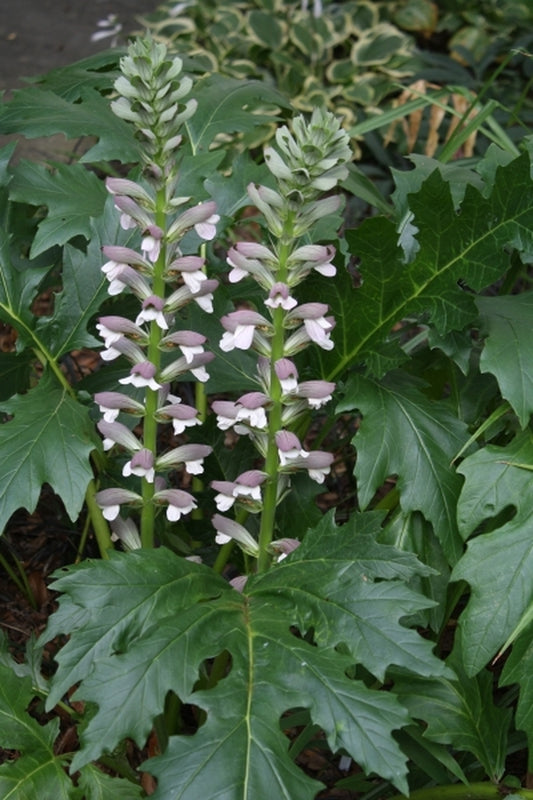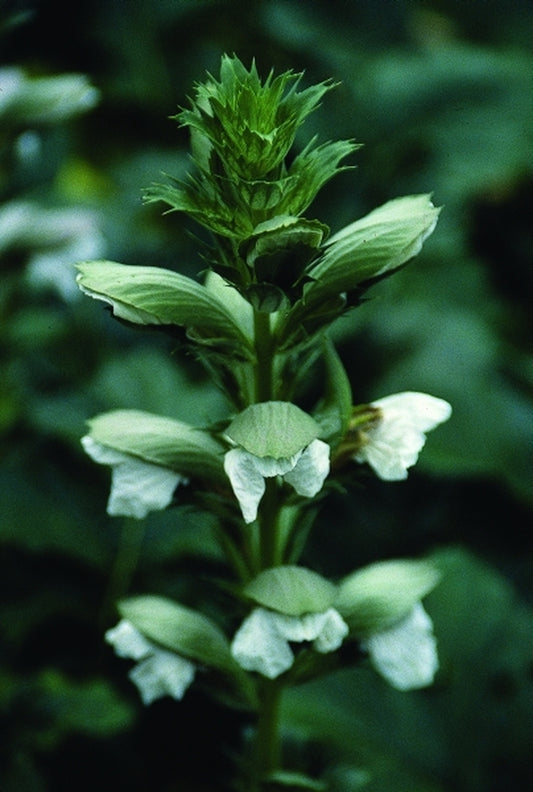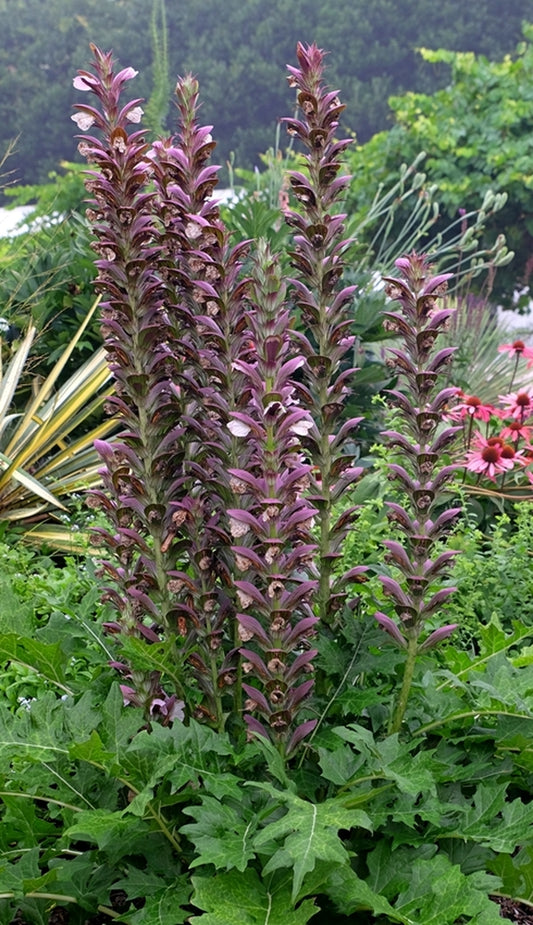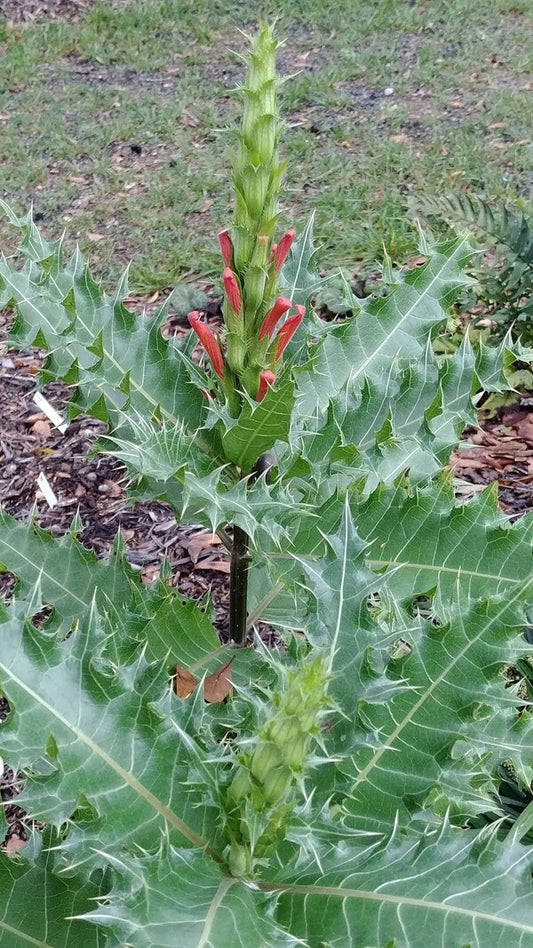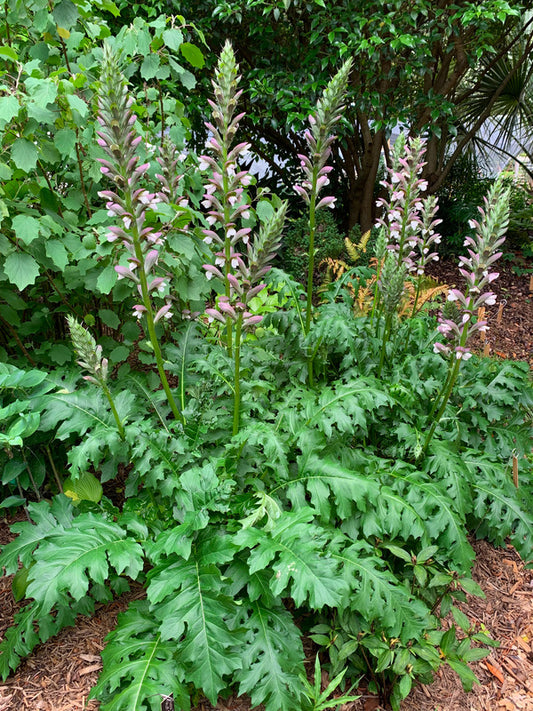While people grow acanthus plants for their attractive, shiny, lobed leaves, they also produce a wonderful 2-6' tall spike lined with purple and white flowers. Acanthus is also deer-resistant.
-
Acanthus hungaricus
Item #: 3496
Zones: 6a to 8b, possibly colder
Dormancy: Winter
Height: 18" tall
Culture: Part Sun to Shade
Origin: Southeast Europe
Pot Size: 3.5" pot (24 fl. oz/0.7 L)
Regular price $27.00Regular priceUnit price per -
Acanthus mollis Reut, Israel
Item #: 9811
Zones: 7a to 10b, at least
Dormancy: Winter
Height: 24" tall
Culture: Part Sun to Shade
Origin: Mediterranean Europe
Pot Size: 3.5" pot (24 fl. oz/0.7 L)
Regular price $27.00Regular priceUnit price per -
Acanthus mollis 'Rue Ledan'
Item #: 4732
Zones: 6a to 8a
Dormancy: Winter
Height: 20" tall
Culture: Part Sun to Light Shade
Origin: Northern Africa, Southwest Europe
Pot Size: 3.5" pot (24 fl. oz/0.7 L)
Regular price $27.00Regular priceUnit price per -
Acanthus 'Mornings Candle'
Item #: 8933
Zones: 6a to 8b, at least
Dormancy: Winter
Height: 24" tall
Culture: Part Sun
Origin: Hybrid
Pot Size: 3.5" pot (24 fl. oz/0.7 L)
Regular price $27.00Regular priceUnit price per -
Acanthus sennii
Item #: 13718
Zones: 7b to 9b, at least
Dormancy: Winter
Height: 36" tall
Culture: Part Sun to Light Shade
Origin: Ethiopia
Pot Size: 3.5" pot (24 fl. oz/0.7 L)
Regular price $28.00Regular priceUnit price per -
Acanthus 'Summer Beauty'
Item #: 2526
Zones: 6a to 8b, at least
Dormancy: Winter
Height: 30" tall
Culture: Part Sun to Shade
Origin: Hybrid
Pot Size: 3.5" pot (24 fl. oz/0.7 L)
Regular price $27.00Regular priceUnit price per
More Information About Acanthus
How to Grow and Care for Acanthus (Bear's Breech)
Acanthus are a European species prized for their exotic tropical-looking foliage. While many of the common acanthus plants do not thrive in hot, humid summer climates, we are finding many to be heat-tolerant.
Although most people grow acanthus plants for their attractive, shiny, lobed leaves, they also produce a wonderful 2-6' tall spike lined with purple and white flowers. Acanthus is deer-resistant and pairs well with plants that highlight its unique foliar texture.
Sun and Water Requirements
Acanthus prefers to grow in partial sun conditions in rich soil and does not tolerate wet feet. Once established, an acanthus plant can tolerate some drought.
Propagation
Since acanthus plants grow from root cuttings, plant them where you would like them to remain since moving the plant always seems to leave a few root pieces behind.
Acanthus Companion Plants
Try combining acanthus with carex, iris, ferns, tradescantia, setcreasea, or selaginella.
The History of Acanthus
Acanthus plants are native to woodlands and hillsides around Italy and Greece. The ancient Romans and Greeks revered the acanthus plant and incorporated the plant into their cultural history and architecture, decorating their Corinthian and Composite order columns, dentils, and friezes with carved acanthus plant leaves. According to Greek mythology, Acantha was a nymph who resisted Apollo's romantic advances and was turned into the plant as punishment. When you are ready to buy acanthus for your garden or home, check out our list of acanthus plants for sale.
Bear's Breech Etymology
The common name of Acanthus is Bear's Breech...why in the world would someone name a plant after Yogi's britches? Well, according to plant taxonomy expert William Stearn, the name Bear's Breech comes from the medieval (Pre-Linnaean) latin name 'Acanthus sativus branca ursina' (Linnean name...Acanthus mollis) which means 'Cultivated Spiny Bear Bract', because they thought the curved bracts on the flower stalk looked like a bear claw. Over time people mis-pronounced or mis-translated the word 'branca' into 'breech', leading to the common name bear's breech. So technically, Bear's Breech should really be called bear claw flower...but it's too late to change it now.



